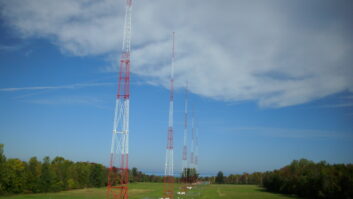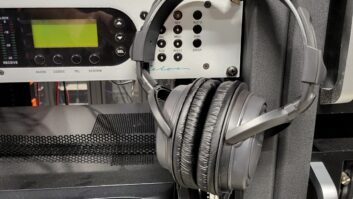
Fig. 1: Threaded steel stock forms the basis of this RPU antenna.
So your manager has been bugging you to “do more with less” these days? Here’s a slick solution from consulting engineer Buc Fitch.
He recently had to replace a whip antenna for a Marti 160 MHz RPU transmitter. Buc has used this technique before with satisfactory results, and offered to share the construction details with Workbench readers.
The advantages of this construction project are quick fabrication, the ability to optimize the antenna for a specific frequency, rugged construction and the capability to re-use the whip on new frequencies by changing the top section.
Essentially the antenna is made up of off-the-shelf, one-foot-long, 6/32-inch continuous threaded screw stock. Typically known as “all-thread,” it is available at any hardware store.
The coupler is a 1 inch long, 6/32-inch threaded aluminum coupling section, also known as a spacer or standoff, pictured in Fig. 1.
Buc grinds a few thousandths of an inch off the bottom one inch of the lower section of all-thread. This slides comfortably into a PL-259 RF connector. Back up the all-thread about 1/8-inch from the end of the center conductor to allow a nice solder weld. Set the iron for about 600 degrees and flow the solder into the center conductor pin, with a result seen in Fig. 2.
Screw on the coupler to the opposite end of this bottom section of the all-thread. Screw the coupler down about a half-inch onto these threads. Put your Bird Thruline wattmeter on its side and attach the whip to the output side. It should be pointing up in the air and free from nearby metal objects as you prepare to tune.

Fig. 2: Grind a bit off the stock, making for a nice fit into the PL-259, which is then soldered.

Fig. 3: A rubber bumper protects the sharp end of the whip from injuring someone. Prepare a suitable but longer length of something like #12 bare copper solid wire, and stick that in the open top of the coupler to bring the antenna length near resonance. In this case, where we are trying to achieve the highest efficiency and lowest VSWR, Buc started out with a 7-inch length of that bare #12 wire.
Ham rigs at 146 MHz traditionally use about 19+ inches, so with an effective 11-1/2 or so inches at the bottom and 7 inches of copper at the top, Buc knew he was below the frequency of 1/4-wave resonance.

Fig. 4: The completed whip.

Fig. 5: Your new whip is installed on the Marti. Peak your transmitter for the best match into a 50 ohm load. Then turn on the transmitter and use it as the RF generator into the Bird, with the antenna connected to the Bird output. Measure and record forward and reverse power. Buc likes to work with 5 watts or less.
Now carefully cut the top of the #12 gauge copper wire in 1/8-inch increments, until you just pass resonance.
Carefully measuring, Buc transfers that length to the second piece of all-thread (plus the 1/8-inch that he overshot in the last cut). Screw this cut-to-length section into the coupler and tighten up both the top and bottom pieces into the coupler.
After a test of the final antenna with the transmitter, Buc adds RTV in the base of the PL-259 with the whip aligned so it is perfectly vertical. Similarly seal the top bumper with RTV. The top bumper, shown in Fig. 3, is just a safety feature so that someone’s eye won’t come in contact with the bare end of the all-thread.
Here’s the best part: the cost. The finished whip consists of the all-thread at a cost of $1.79 a section, a coupler at 75 cents, and the PL-259, which runs about $2 from MCM (www.mcmelectronics.com).
The RTV was from The Electronic Goldmine (www.goldmine-elec.com) and was 10 cents a tube when Buc bought it. The bumper at the top was salvaged from the leg of a kitchen seasoning stand long gone; any rubber bumper will do.

Fig. 6: Remember when. For under $10, a trip to the junk box and a few hours in the shop, you can have the whip of your dreams, seen installed on the RPU in Fig. 5.
* * *
Young and old time engineers will have some fun at this site. It archives old Radio Shack catalogs all the way back to 1939. The tip is contributed by Jim Johnson, Charlie Wooten and Chuck Kelly.
It’s scary to recognize some of the components in the early catalogs from your high school radio class days. Younger engineers can get a good idea of what they missed.
John Bisset marked his 40th year in radio in broadcasting recently. He is international sales manager for Europe and Southern Africa for Nautel and a past recipient of the SBE’s Educator of the Year Award. Reach him at[email protected]. Faxed submissions can be sent to (603) 472-4944.
Submissions for this column are encouraged and qualify for SBE recertification credit.












